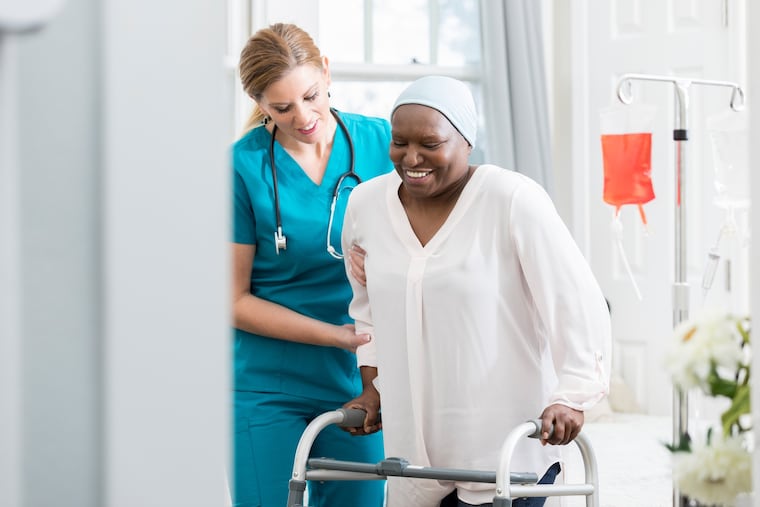In surgical recovery — or any tough task — the key is to keep moving, cardiac resident learns
I watch my patients get out of bed after a major procedure, and realize that I can tackle my challenges, too.

One morning in the ICU, I happened to overhear my patient — who had just undergone open-heart surgery at age 70 — groan to the nurse.
“I don’t know, I don’t think I can get out of bed this soon after surgery,” he said.
She persisted. As an experienced nurse, she knows that getting moving soon after surgery can help improve recovery.
Sure enough, when I came by the room again 30 minutes later, the patient was sitting in a chair comfortably, looking more energetic, and asking when he would be allowed to take a walk.
When I started my training, our approach to moving patients along the recovery pathway perplexed me. It seemed too risky to move patients who were still weak and connected to more tubes and wires than I could count. Why not let an open-heart surgery patient take a break and let him rest for as long as he needed?
What an outsider — or new resident — might not understand is the multiple benefits associated with movement after surgery. Not only is recovery improved, many patients also can even go home sooner if they are as active as they can be. After watching countless patients get out of bed bright and early in the morning after surgery, two observations stand out.
First, no one feels 100 percent ready to get out of bed after surgery. The most motivated souls are less resistant to the idea, but everyone needs to be encouraged to get moving.
Second, once they get out of bed, their mindset about recovery changes. They begin to believe their recovery is within their control and they challenge themselves to participate in their recovery.
Still, watching them take these leaps in progress conjures some anxiety, even for doctors. Are they truly ready?
When a lab value or vital sign looks even a little less than perfect, I’m sometimes inclined to put off getting a patient out of bed. But I know that would be a mistake.
This same tension can be true in other parts of life, as well. I have felt the impulse to pull in the reins when the next step might be one that causes discomfort.
I experience this trepidation each day on my way to work as I know I will encounter situations that are new or intimidating. With each step forward, I will be asked to participate in operations that I have not come close to perfecting. I will be asked to manage patients whose conditions are more complex than ones I had seen before. I will hear criticism, some justified, some maybe not.
In these moments, I imagine how nice it would be to simply repeat yesterday.
Then I am reminded of my patients who have taught me about the essence of progress, that it relies on growing into the next step instead of waiting until it is entirely risk-free to take it. Although our natural tendency may be to stay at a comfortable place instead of leaping into the unknown, progress means that we have to sometimes force ourselves to constantly move forward — to learn the new technique, to observe a patient with a new (to me) condition, to get out of bed.
Surely if my patients can find the courage to fight to reclaim their bodies’ most basic functions such as breathing or standing after surgery, then we, too, can all reach a little further in our lives each day.
Living is moving. The impulse, restlessness, and the courage that keeps us from being still is the essence of our existence.
As a health-care provider, I ask my patients to constantly move forward even if they do not yet feel completely prepared. From watching their inspiring progress, I find the motivation to grow alongside them.
Jason Han is a resident in cardiothoracic surgery in the Perelman School of Medicine at the University of Pennsylvania. The opinions expressed in this article do not represent those of the University of Pennsylvania Health System or the Perelman School of Medicine.